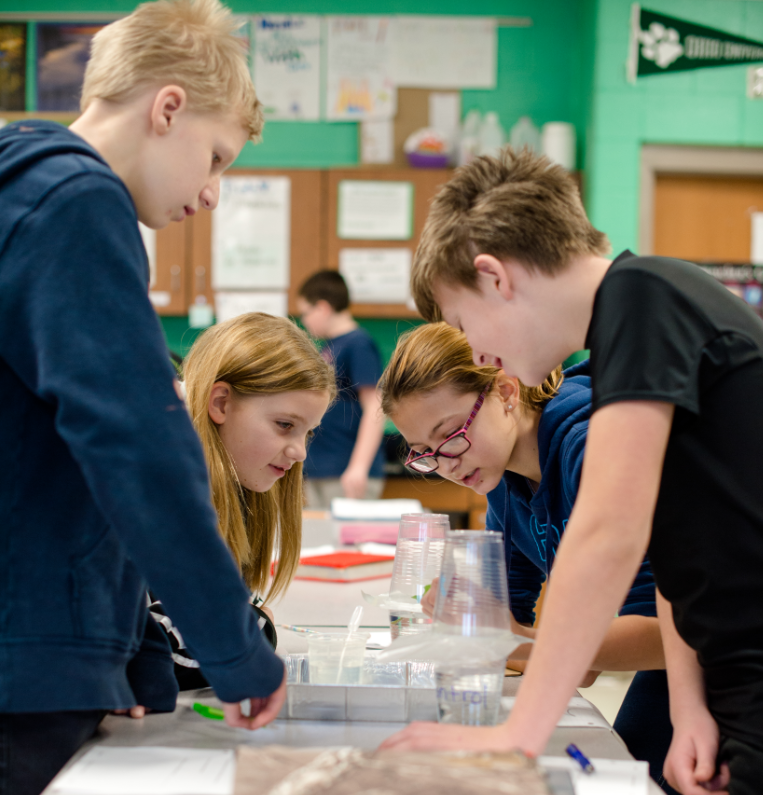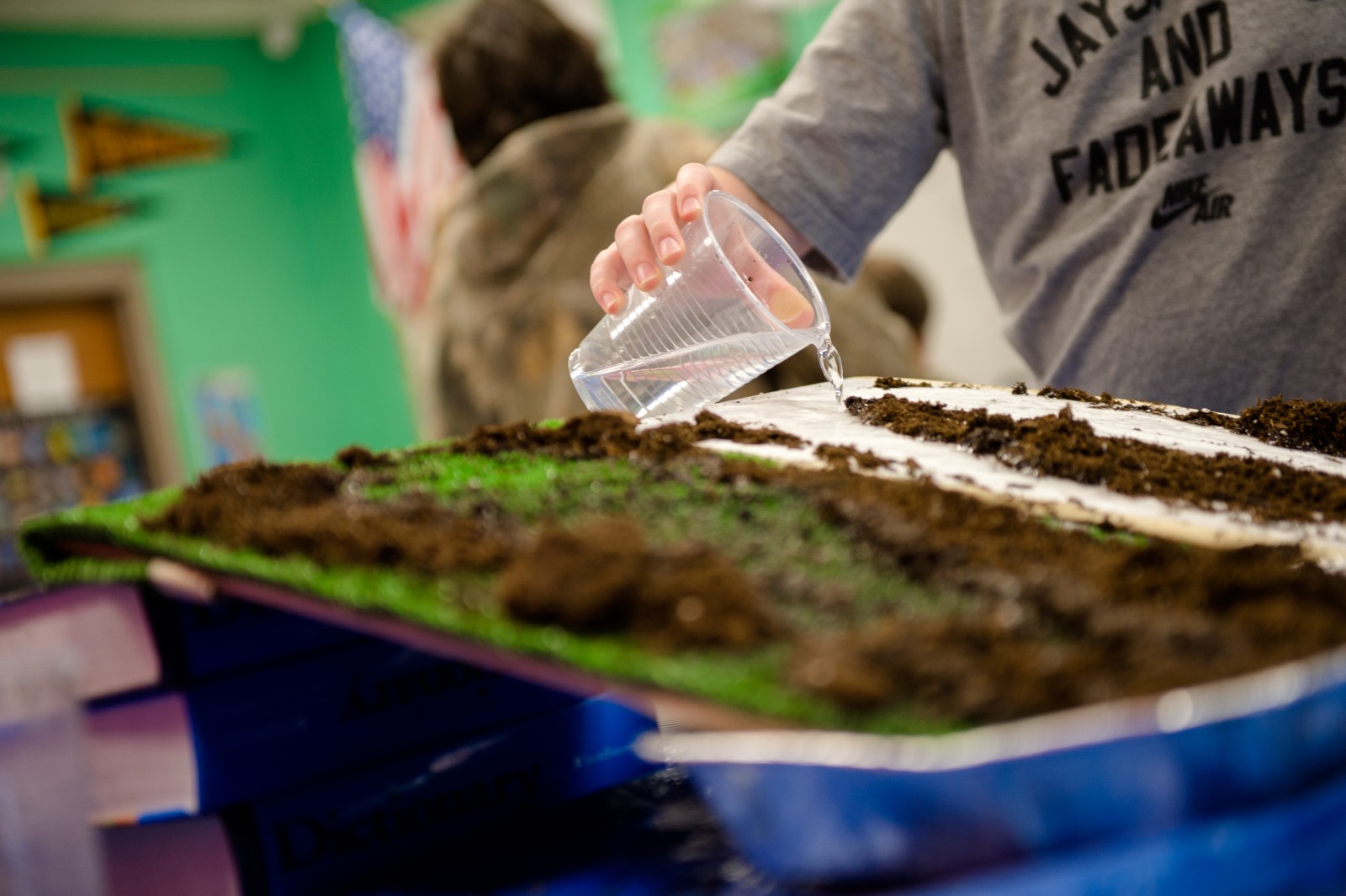Mi-STAR Instructional Model: Lesson Structure
The Mi-STAR Instructional Model is a student-centered approach to classroom science instruction that helps teachers meet the Michigan Science Standards (MSS)/ Next Generation Science Standards (NGSS) while using science and engineering to address real-world 21st Century issues.
The Mi-STAR Lesson Structure supports students in developing key knowledge and skills related to small, specific questions they have about the larger Unit Challenge. It provides the day-to-day structure needed to make it possible for students to tackle a sophisticated challenge.
In the Classroom
Anchoring Experience - The goal of this phase is to expose students’ current knowledge and misconceptions of the lesson content. They do this by considering puzzling phenomena related to the lesson content, asking questions, and documenting their initial thoughts.
Uncover Your Ideas - Students work in small groups to investigate the phenomena through experiments, gathering data, building models, and other types of hands-on practices. The goals of this phase are for students to engage with key science and engineering concepts and practices, reason out what they learned from the activity, and develop an initial explanation of the phenomena under investigation. They do this in facilitated small groups.
Share Your Ideas - Through class discussion, students share their initial explanations of what they observed in the previous phase. They analyze and evaluate their findings by listening critically to others’ explanations and justify their own explanations using evidence and reasoning.
Connect Your Ideas - The goal of this phase is for students to transfer their knowledge to a new situation. Students work in teams to develop a deeper understanding of key concepts by connecting their reasoning to the Unit Challenge scenario.
Check Your Progress - In this final instructional phase, teachers assess student understanding of the concepts and practices from the lesson through a three-dimensional learning experience. Students once again have an opportunity to apply their knowledge to a new situation and reflect on how their understanding of the content has changed throughout the lesson.
| Watch the above video to learn more about the Mi-STAR Instructional Model. |
A Deeper Look
The Mi-STAR Instruction Model integrates elements of two models for sequencing instruction, the BSCS 5E Instructional Model (Bybee et al., 2006) and the gathering, reasoning, and communicating sequence (Moulding, Bybee, & Paulsen, 2015). The underlying logic of the 5E model is that students engage with concepts in multiple contexts. Individual phases are effective because of how they build on previous phases and establish readiness for subsequent phases. The gathering, reasoning, and communicating model facilitates authentic, student-driven use of science and engineering practices within each phase of the lesson.Both models are student-driven in the sense that students ask questions, make observations, collect data, make sense of data and observations, and discuss their ideas with others in order to come to conclusions for themselves, rather than discovering concepts through a traditional teacher-given lecture and then completing a lab that reinforces those concepts.
This lesson model provides the framework for positive student learning experiences that integrate the science and engineering practices, crosscutting concepts, and disciplinary core ideas of the standards and promotes student achievement of the Next Generation Science Standards and the Michigan Science Standards.
 |
Sources
- Bybee, R.W., Taylor, J.A., Gardner, A., Van Scotter, P., Powell, J.C., Westbrook, A., & Landes, N. (2006). The BSCS 5E instructional model: Origins, effectiveness and applications. Colorado Springs: BSCS.
- Moulding, B.D., Bybee, R.W., & Paulson, N., (2015). A vision and plan for science teaching and learning: An educator’s guide to a framework for K-12 science education, next generation science standards, and state science standards. Salt Lake City: Essential Teaching and Learning Publications.



















